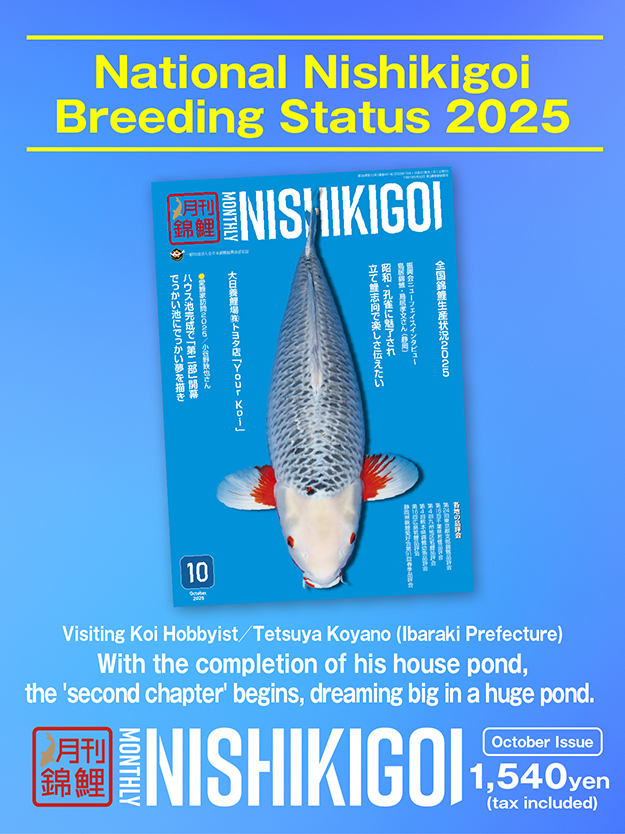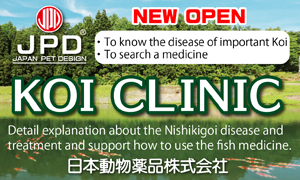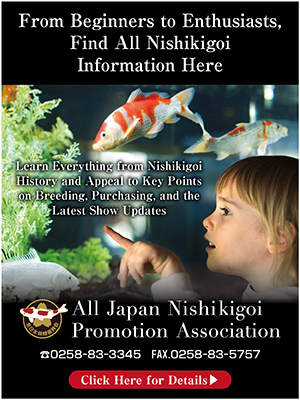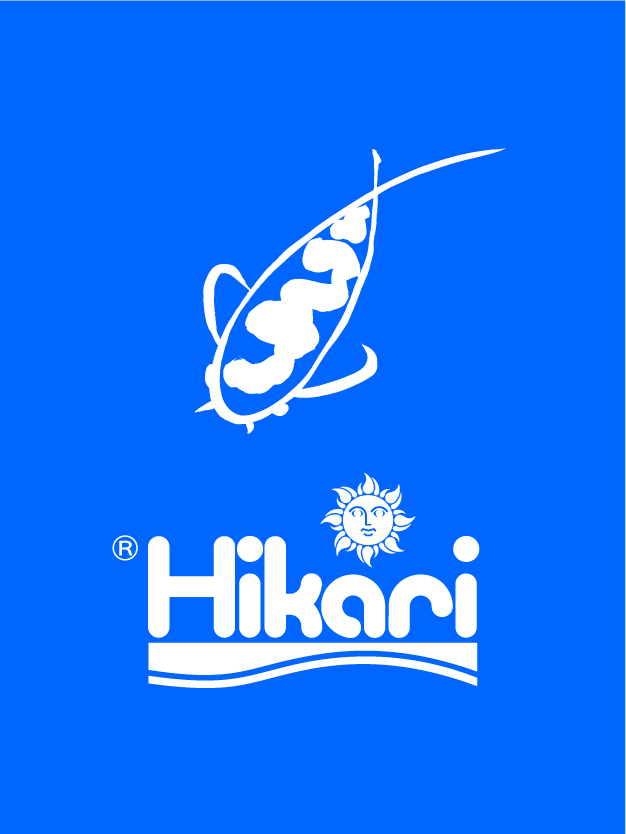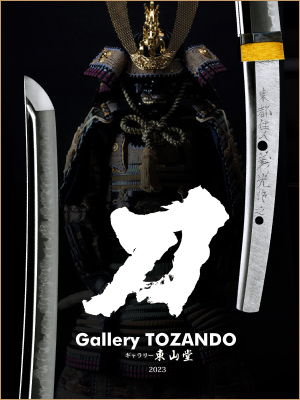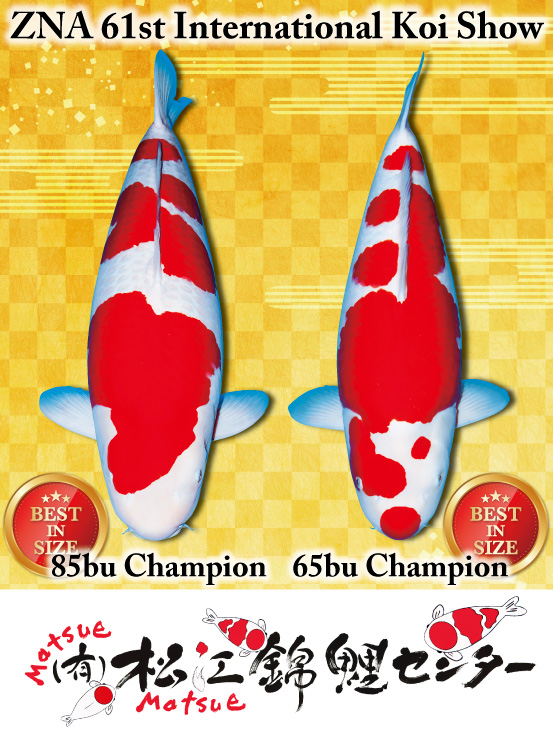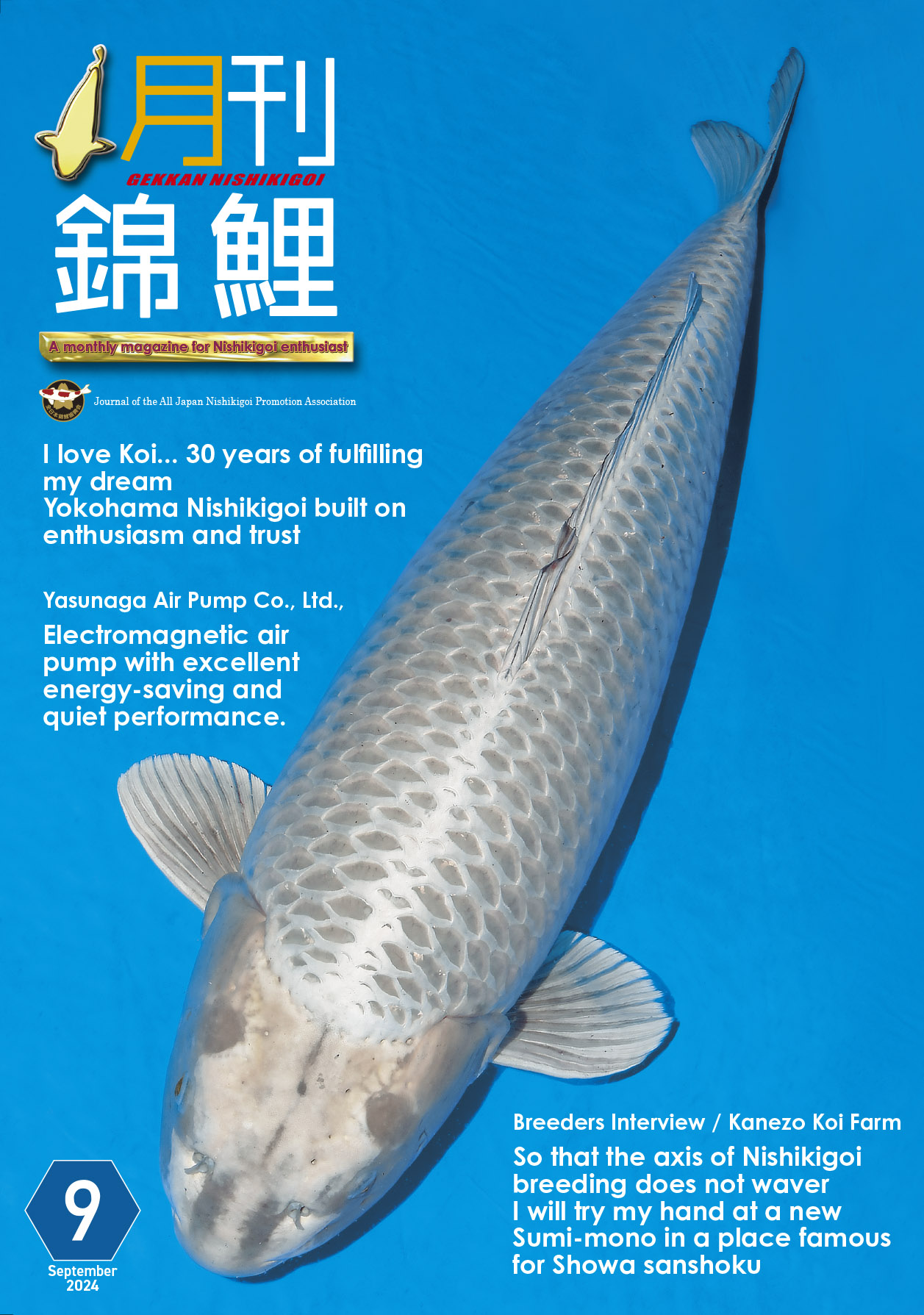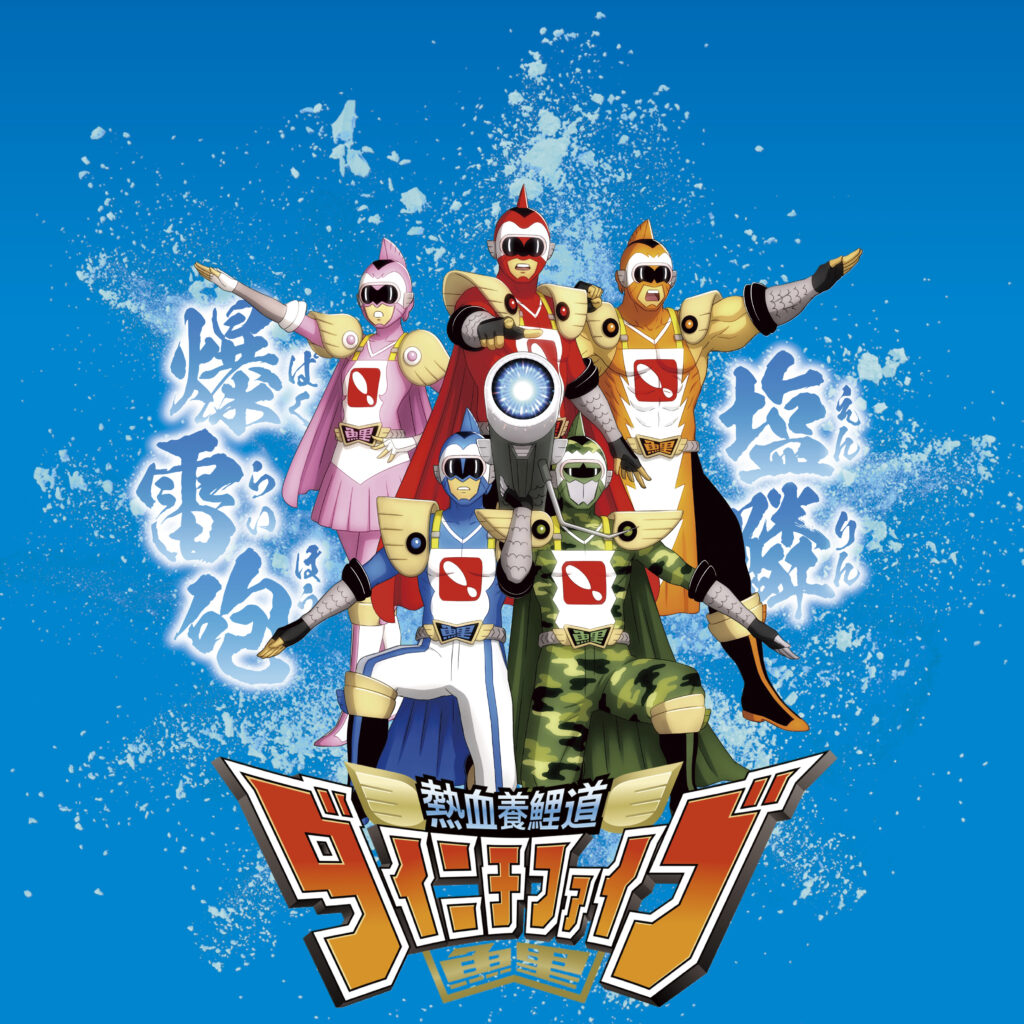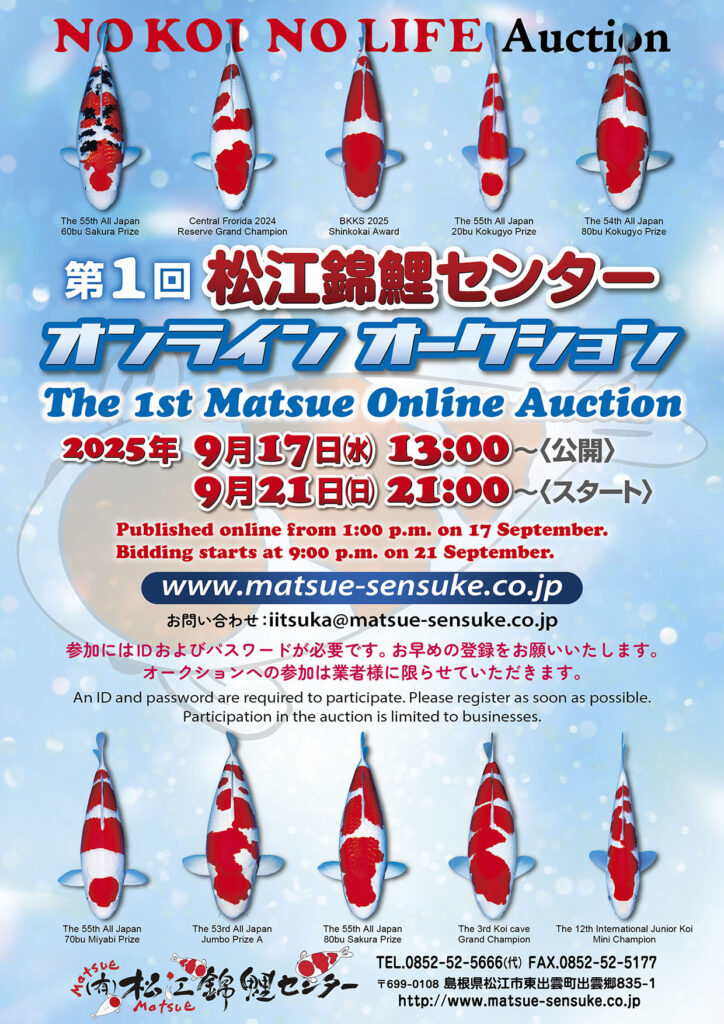Winning the Kokugyo Award in the fiercely competitive Showa category.
‘Connoisseurship and breeding make the most potent combination.
ー At last year’s All-Japan Koi Show, you won the Kokugyo Award in the ‘Showa’ category (Photo 2), but with many strong competitors like Isa and Sekiguchi in the prefecture, isn’t it challenging to produce koi of such a high level?
Sakamaki: That was thanks to Narita (laughs). When the koi was two years old (Photo 1), it was entered in the Nagaoka City Koi Show and won the young champion. After that, Narita bought it, and when it was three years old, it won the Kokugyo Award (Photo 2). When it was two, the sumi hadn’t developed much, and its body was still thin, so when Narita first sent me a photo, the impression was completely different, and I thought, ‘Is this really my koi?’ (laughs). I’m truly grateful.
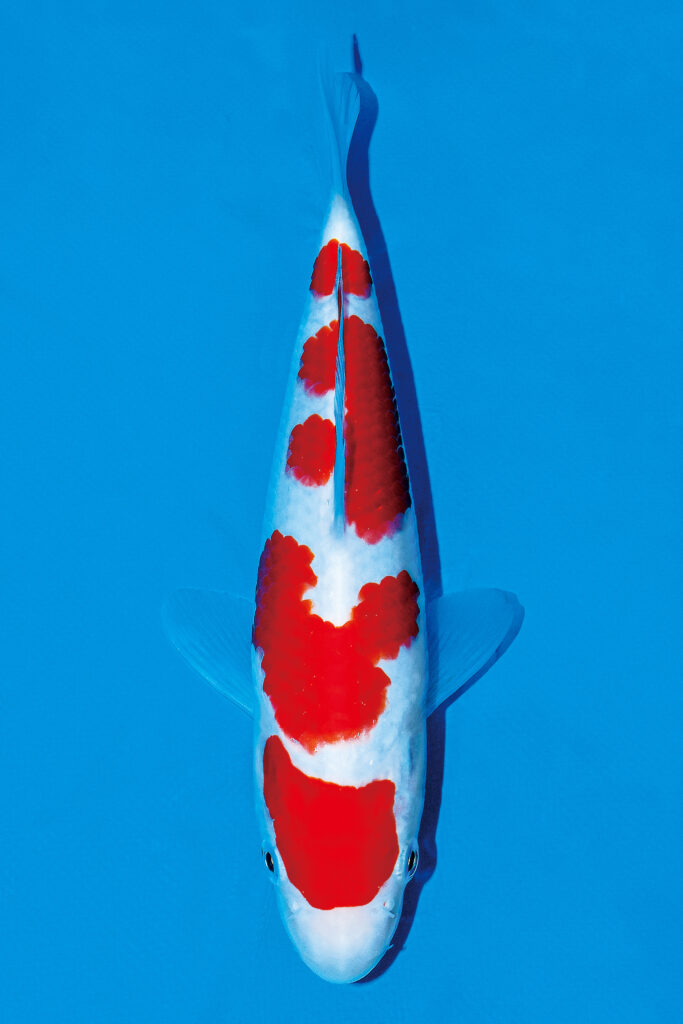
Junior Champion
20bu Kohaku/ Shinichi Iijima
と取扱の金太郎錦鯉㈱・金城政巳さんと会場で-768x1024.jpg)
Kintaro Nishikigoi
ー That’s also thanks to your breeding, and such connections have led to the success we’re seeing today.
Sakamaki: I’ve won awards thanks to everyone’s support and kindness.
ー Kintaro, in particular, often wins awards for his Sakamaki’s koi.
Sakamaki: Originally, both Kintaro and I were employees of Dainichi, although he worked at Dainichi Toyota. We joined about six months apart, and since there was an annual year-end party where people from Niigata and Aichi would gather and many opportunities to meet up at koi shows, we became good friends. When Kintaro left Dainichi Toyota and started working at Sakura Nishikigoi (Shizuoka), he would occasionally buy from me, and after he became independent, he bought from me quite a lot.

65bu Champion (Governor’s Award)
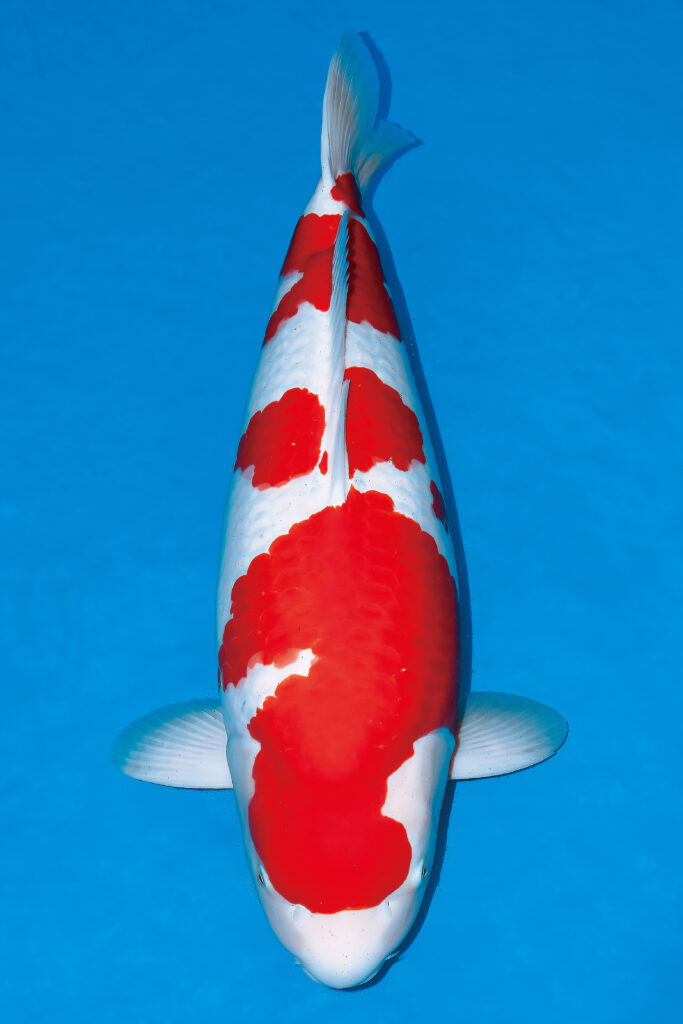
Jumbo Champion
ー Kintaro is a strong player in koi shows and has certainly helped with PR as a spokesperson for you, right?
Sakamaki: That’s right. We have won a lot of awards (laughs). Also, since Kintaro has a good relationship with Narita, they come together and help sell my koi. Thankfully we have received the Kokugyo award and Junior champion.
ー While overseas hobbyists dominated the top places in koi shows, the Junior champion was awarded to a Japanese hobbyist. I think this will have a positive influence on Japanese koi lovers. How did the sale of that Kohaku come about?
Sakamaki: That was a two-year-old koi raised using intensive rearing. It was kept in a greenhouse during the summer, and Kintaro came by and bought just a few—maybe three out of the 500 pcs. The Kohaku was one of them. It was kept at our place until the autumn, and I sent it to Kintaro.
ー The award was achieved through Kintaro’s eye for quality and your rearing techniques. Is it common to rear koi in greenhouse at two years old for intensive rearing?
Sakamaki: Before, we kept around 1,000pcs in a greenhouse, but recently, the numbers have decreased to a few hundred. Last year, the quality wasn’t great, so now, there are about 100pcs in a greenhouse and a little over 500pcs in mud ponds. I tend to put the better koi in mud ponds.
ー As you mentioned in a previous interview, you’ve been working on intensive rearing from an early stage, right?
Sakamaki: Back then, there weren’t many places practicing intensive rearing, so my father was often mocked, as people believed koi should grow big in mud ponds. I don’t know if my father was a forerunner, but now everyone is doing it.
ー I am sure that the rearing techniques have led to Sakamaki’s current strengths. The reason for separating mud ponds and concrete ponds is to have a variation in size?
Sakamaki: Yes, because even though they are two years old, it is better to have some variation in size so that we can respond to customers’ demands.
(To be continued in the part 2.)
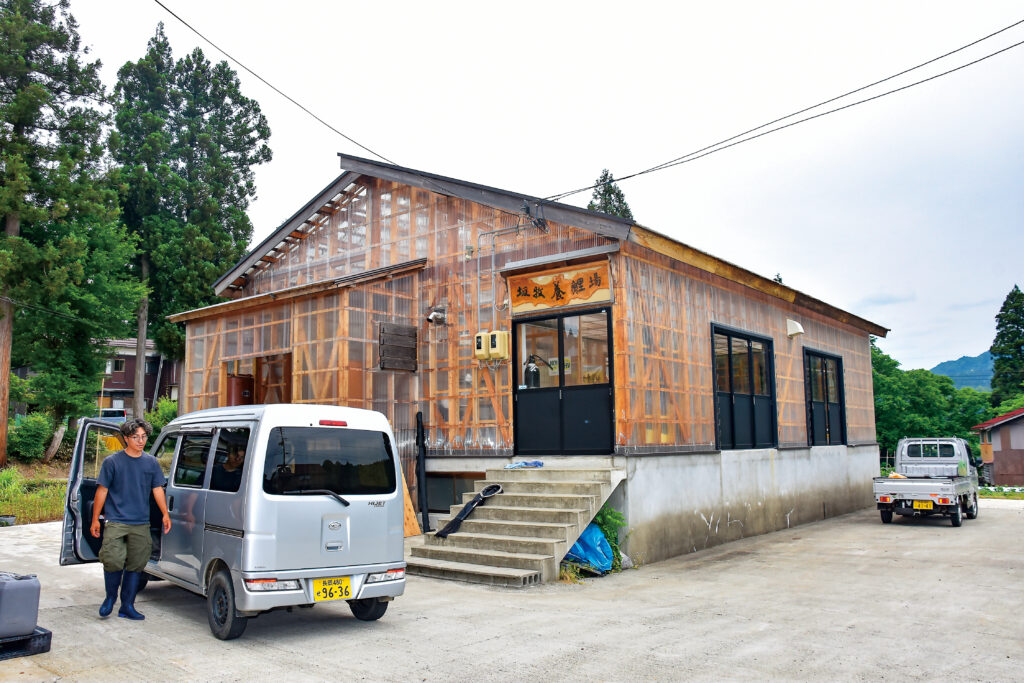



the summer.
-1024x576.jpg)


